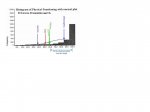Clinically useful improvement.
... However the decision on whether these changes are clinically significant or clinically useful usually depends on the overall impact on health and this is often measured by patients' subjective responses on how they feel their overall perception of health and function has changed. Subjective experiences therefore help validate objective physiological measures.
In the case of PACE, validation is difficult if not impossible.
The primary outcome measures, SF 36 pf and CFQ, are both based on subjective responses of how people 'feel' while three of the interventions tested are specifically aimed at changing patients' subjective feelings about their symptoms and levels of physical function/fatigue; either positively in the case of CBT and GET (symptoms are benign and the condition reversible) or negatively in the case of APT (symptoms should be heeded and the condition is not reversible).
These results alone cannot be considered as clinically useful without external validation, regardless of the degree of improvement.
External validation by an objective measures could be taken as support for a clinically useful improvement however the only objective measure reported was the 6MWT where marginal improvements were found.
Even if these improvements, while small, were statistically significant, they still cannot be validated by the two primary outcome measures for the reasons stated above and therefore cannot be considered as clinically useful.
Ergo, none of the results reported can be proven to be clinically useful.
I understand your point about the dubious validity of the 'clinically useful difference', but I always think it helps to point out how a study has failed on its own terms, particularly where those terms have already been watered down from the protocol.
the interventions tested are specifically aimed at changing patients' subjective feelings about their symptoms and levels of physical function/fatigue
This suggests that GET has an equal effect on perceptions as CBT and I wonder if this is true.
CBT is based on the premise of treating a phobia. It's a pyschological therapy delivered by psychologists and psychotherapists aimed at changing patient cognitions.
GET is based on the premise of treating deconditioning. It uses an exercise programme devised by physiotherapists and occupational therapists.
Certainly GET tells participants things like 'hurt does not mean harm' and that could well have an effect on pain and general symptoms but it's harder to make the case that it would effect perceptions of fatigue and physical functioning - at least not to the same extent as CBT.
Interestingly, while the reported increases in fatigue/physical functioning for CBT are not matched by improvements in 6MWT, the only objective measure we have, there is at least some correlation between fatigue/sf36 improvements and 6MWT improvement.
I'm not saying that the GET programme has no effect on patients perceptions, just questioning whether it is likely to be as strong as for CBT.

